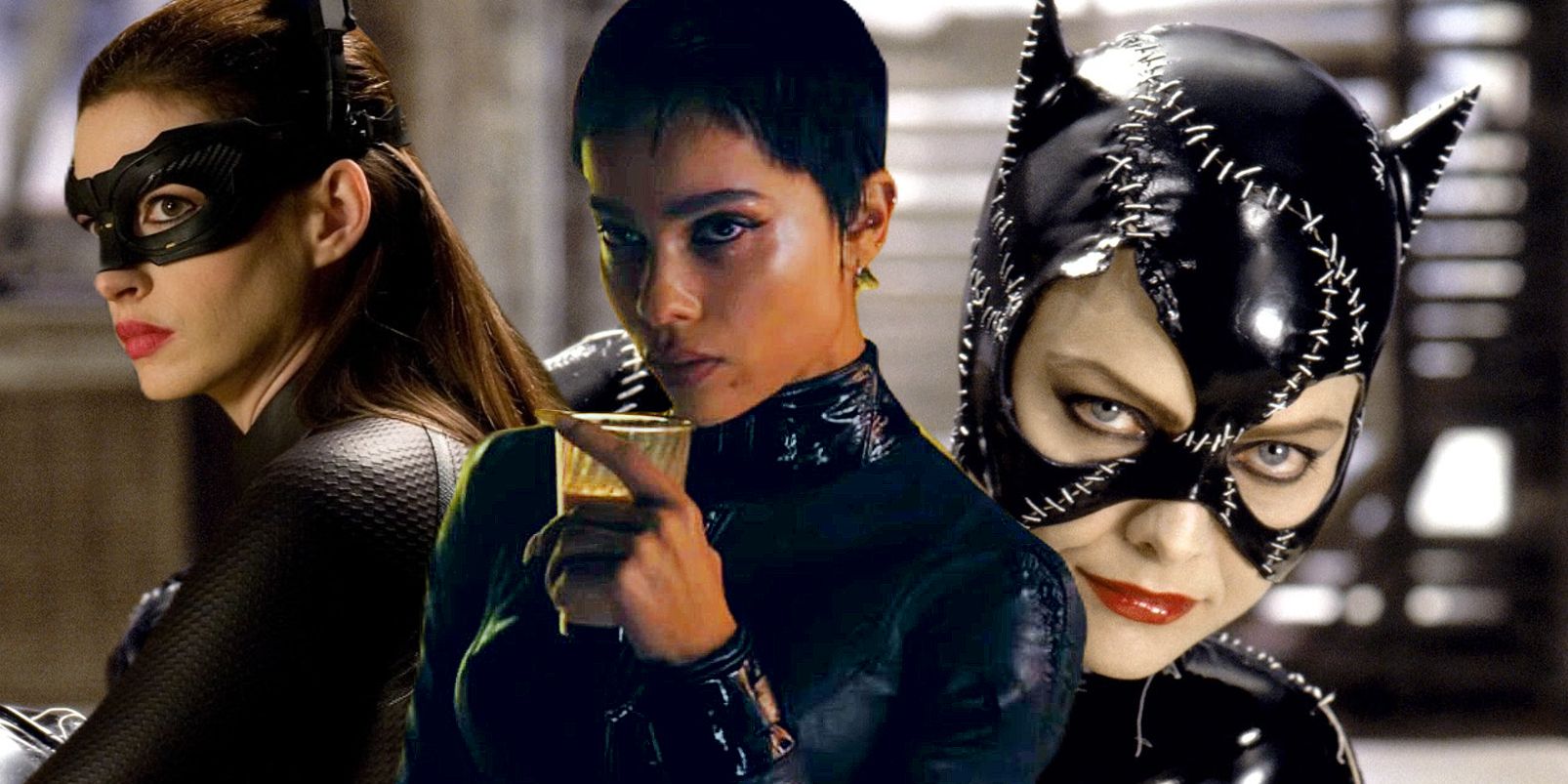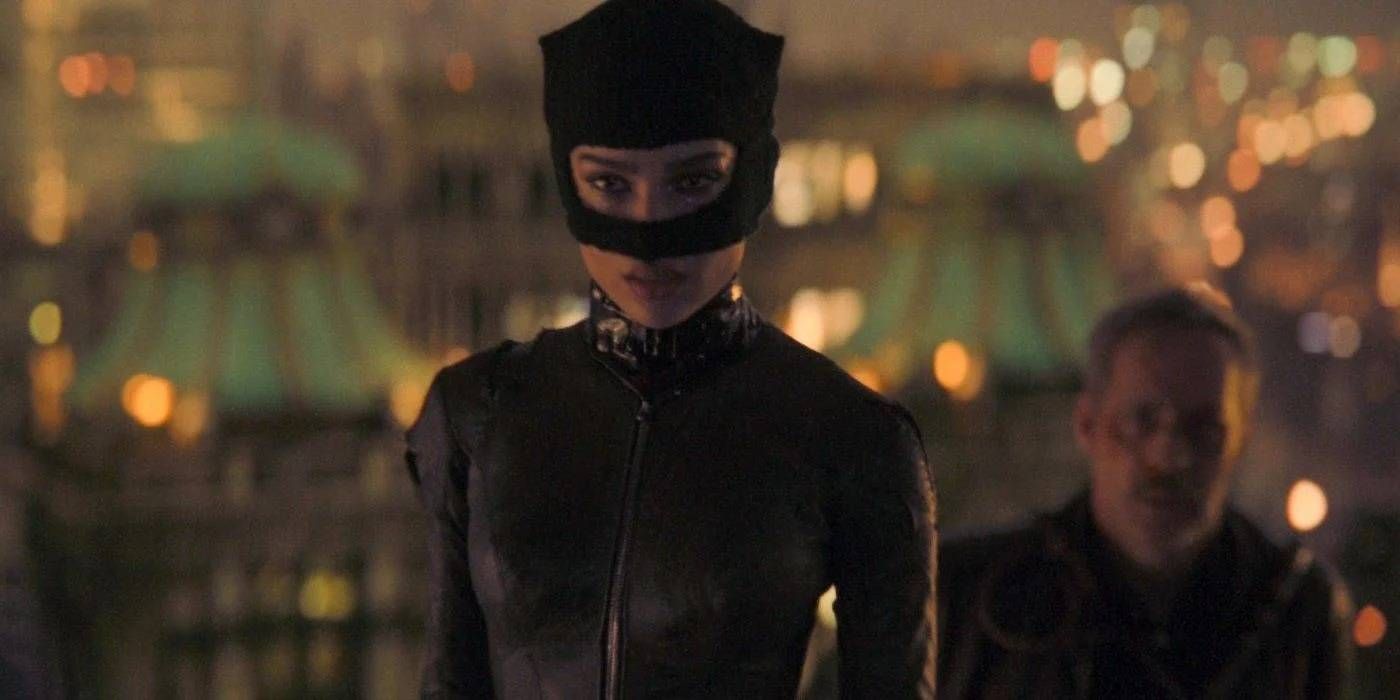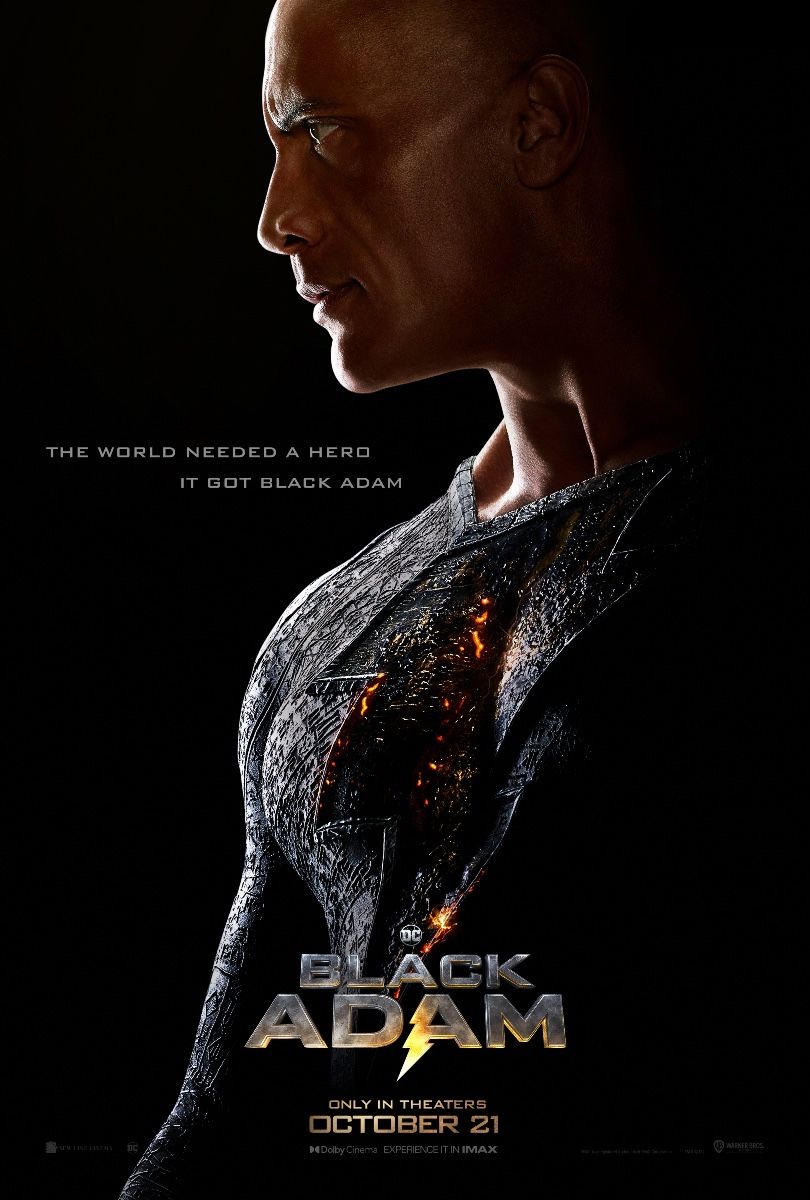The Batman delivers a unique interpretation of Selina Kyle, better known as Catwoman, and fixes a mistake present in both Tim Burton's Batman Returns and Christopher Nolan's The Dark Knight Rises. While Matt Reeves's interpretation of the Batman mythos is derived heavily from the comics, the writer-director was also able to put his own spin on some of the most beloved DC Comics characters. Reeves's interpretation of Selina, played to perfection by Zoë Kravitz in The Batman, took inspiration from Michelle Pfeiffer and Anne Hathaway's portrayals of the character, but Kravitz stands out in one key way.
In Batman Returns, Pfeiffer's Selina is depicted as an undervalued and overworked secretary to Max Shreck, a corrupt businessman, and she's seen residing in a decent-sized Gotham apartment along with her cat. Hathaway's Selina, in The Dark Knight Rises, is a jewel thief and never known as Catwoman, instead being called "The Cat" in Gotham's newspapers. She is shown to be running away from her life of crime, looking for a new start, and living in an apartment with her friend Jen while working as a maid. In The Batman, Kravitz's version of Selina is the neglected daughter of crime boss Carmine Falcone, and she works at the iceberg lounge while living in a dingy Gotham apartment.
The Batman finally presents a version of Selina Kyle who is Bruce Wayne's opposite, with regards to his immense social status and wealth. Batman and Catwoman are meant to be polar opposites, both in terms of Bruce Wayne's strict moral compass versus Selina's acceptance of murder as part of the job as well as through their lives outside their superhero personas. While both Batman Returns and The Dark Knight Rises try to present Selina as struggling to earn enough money to get by, The Batman takes this a step further by revealing Selina as the abandoned daughter of Falcone, with her mother murdered, and her childhood rife with conflict, as she was forced to fend for herself. This Selina feels justified in calling out Bruce's privileged status as an ultra-rich member of Gotham's elite, seemingly without a care in the world, given that she had come from such a poor background.
The Dark Knight Rises attempts to present a similar narrative, as Catwoman famously tells Bruce Wayne that "a storm is coming," which would see the end of the ultra privileged Gotham elite. However, Selina is also shown in that movie to maintain a decent-sized apartment with a roommate. She also regularly attends high-profile events, alongside people like Bruce, dressing in glamorous clothes, and she leaves these fancy social gatherings with incredibly valuable stolen goods. The Batman removes Selina's more chic elements by having her work in a grim, mob-run nightclub alongside the worst of Gotham's citizens, therefore presenting her as truly struggling to get by.
Batman Returns does not emphasize the differences between Bruce and Selina quite so much, but their disparity is definitely still a theme of the movie. Bruce's wealth is less obviously contrasted with Selina there, as she holds down a decent job working for the villain Max Shreck. Although she is far from wealthy, she doesn't appear destitute, and her childhood is never revealed in the same detail as Kravitz's Selina. Compared to Burton and Nolan's movies, The Batman delivers the most compelling live-action film version of Catwoman yet, one that polarizes her against Bruce Wayne's wealth and privilege, making their dynamic that much more interesting.








